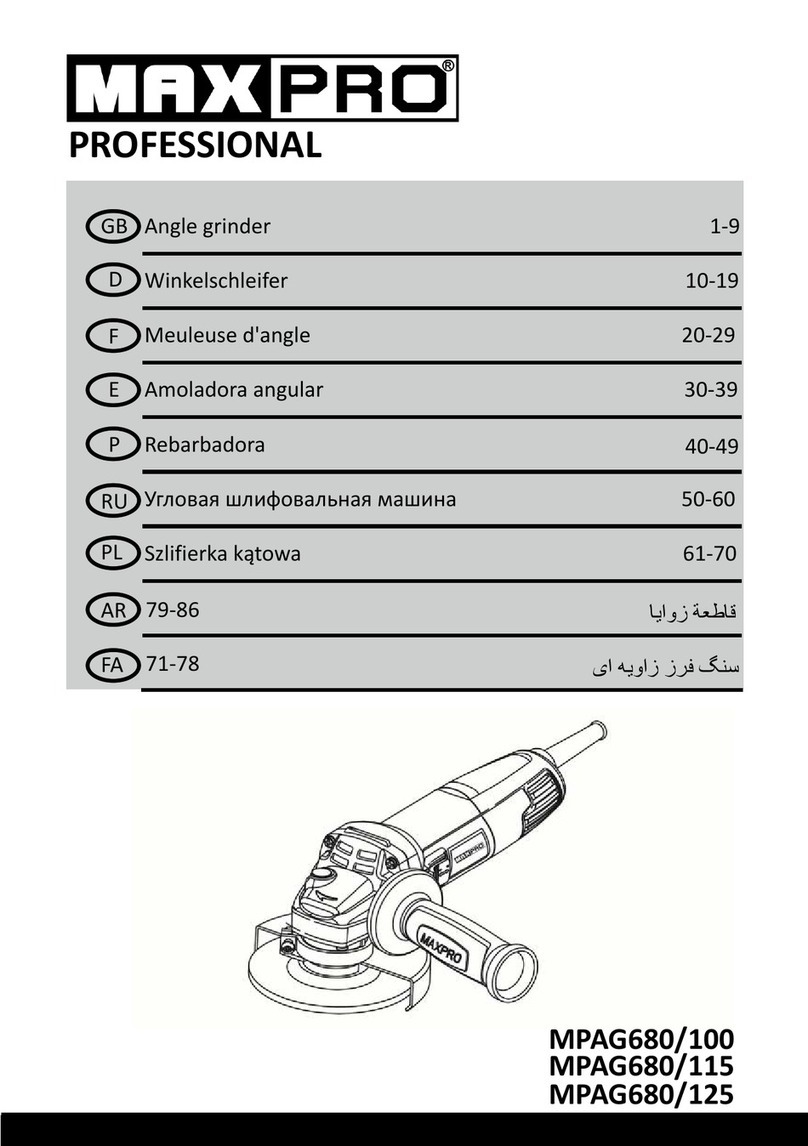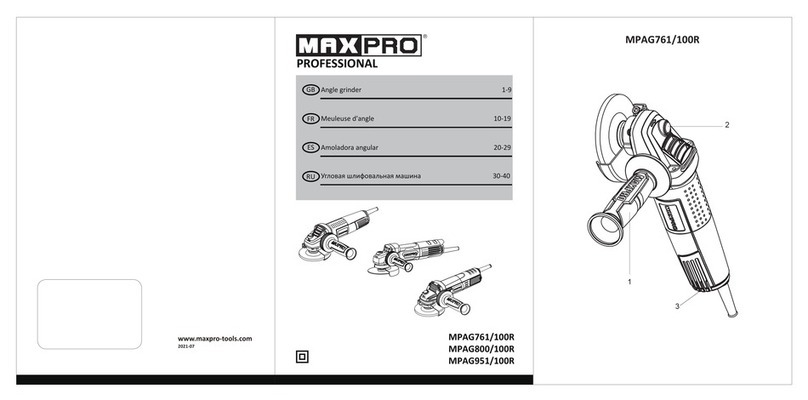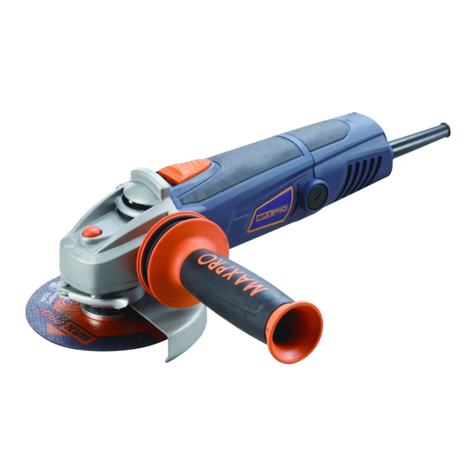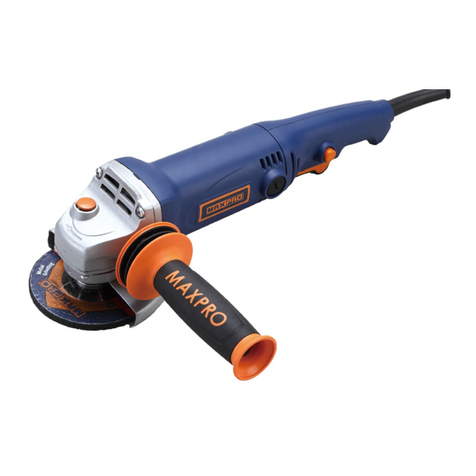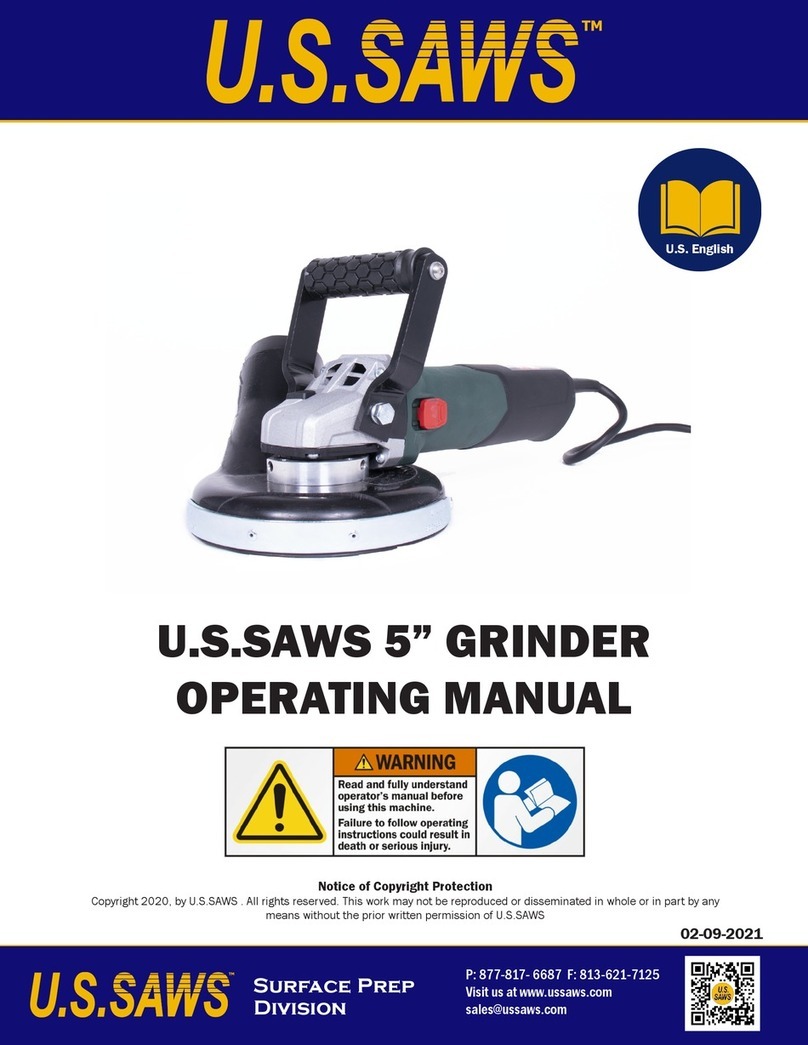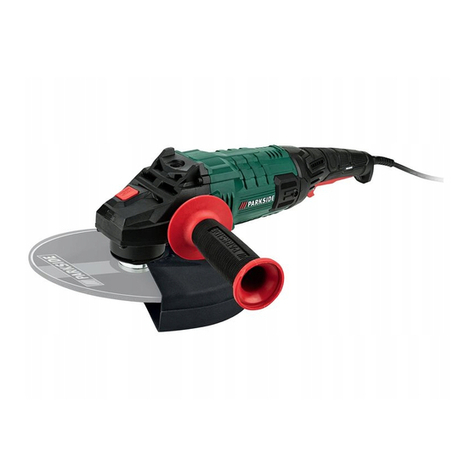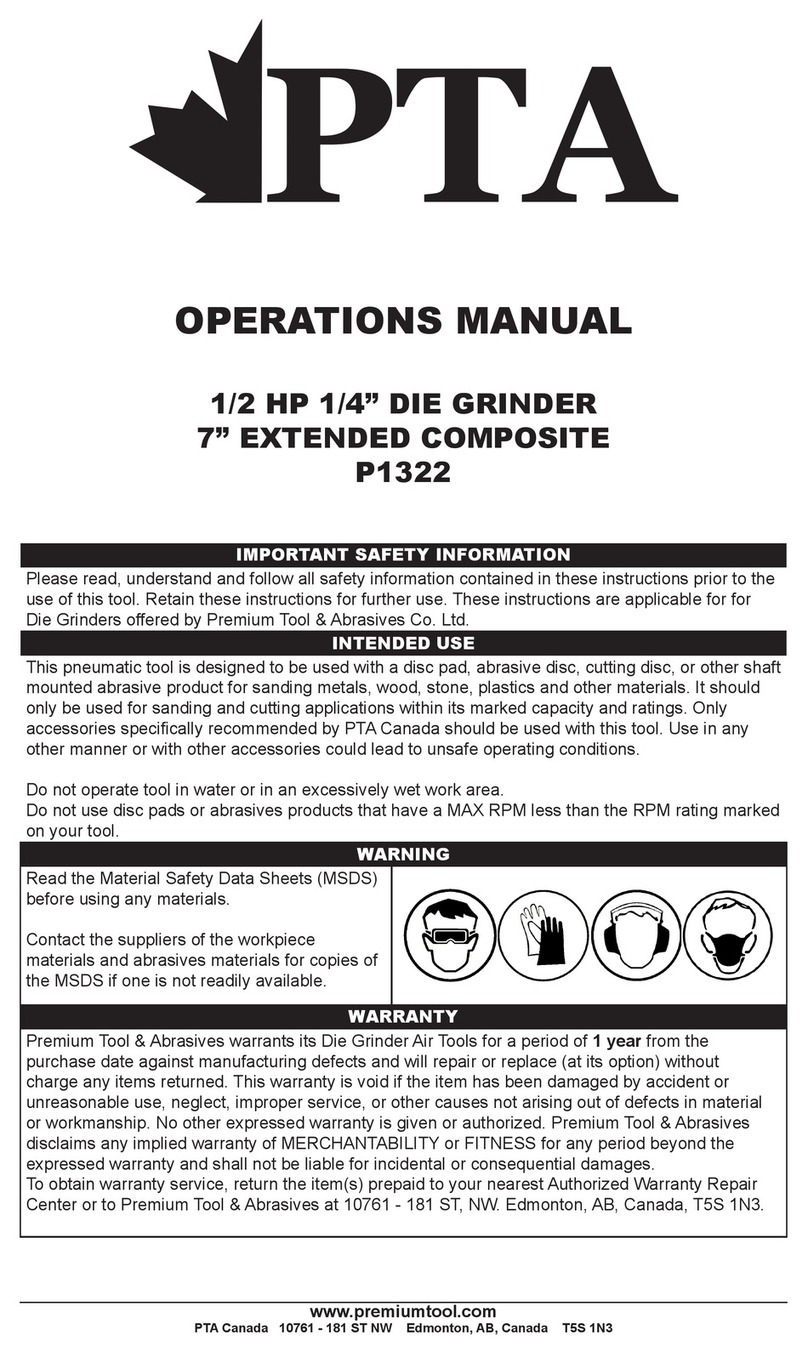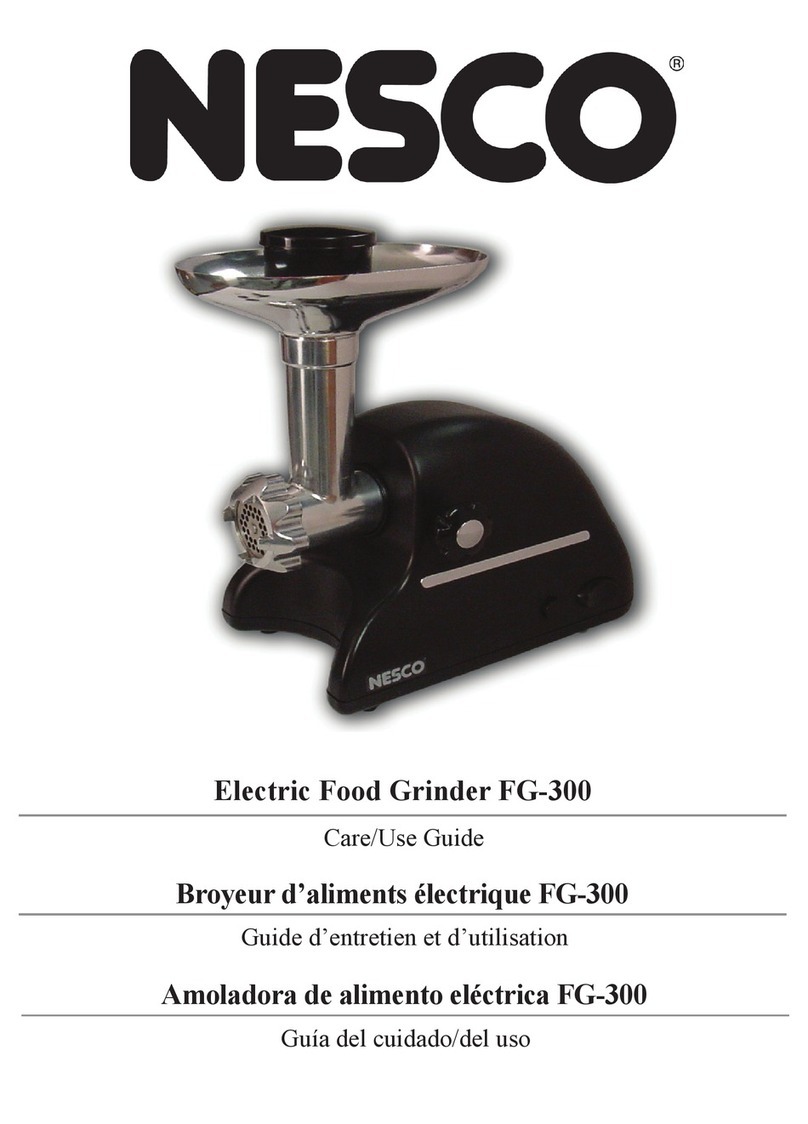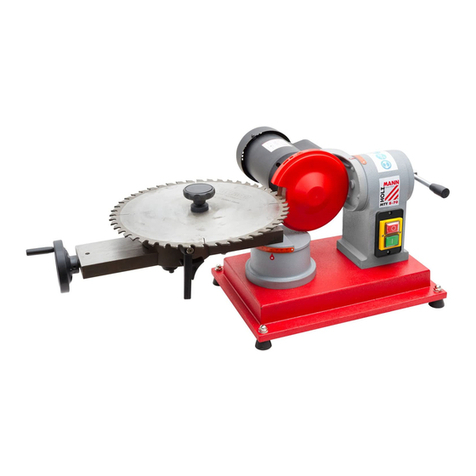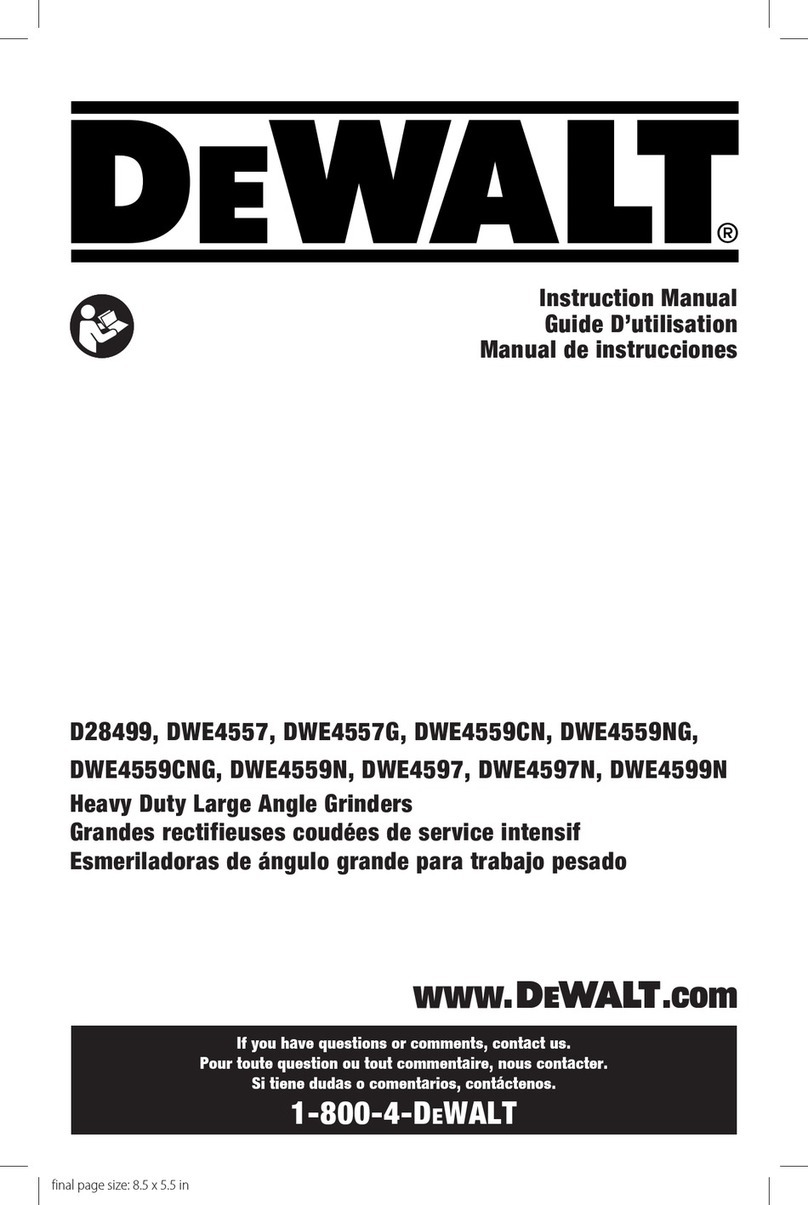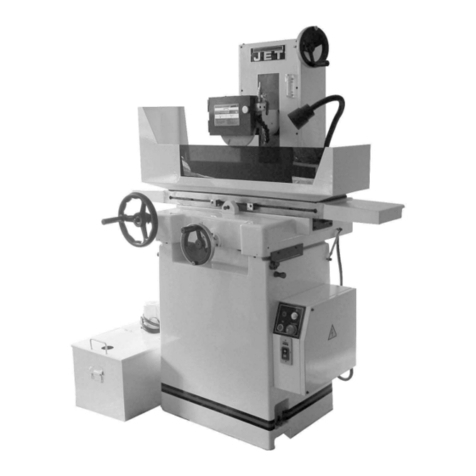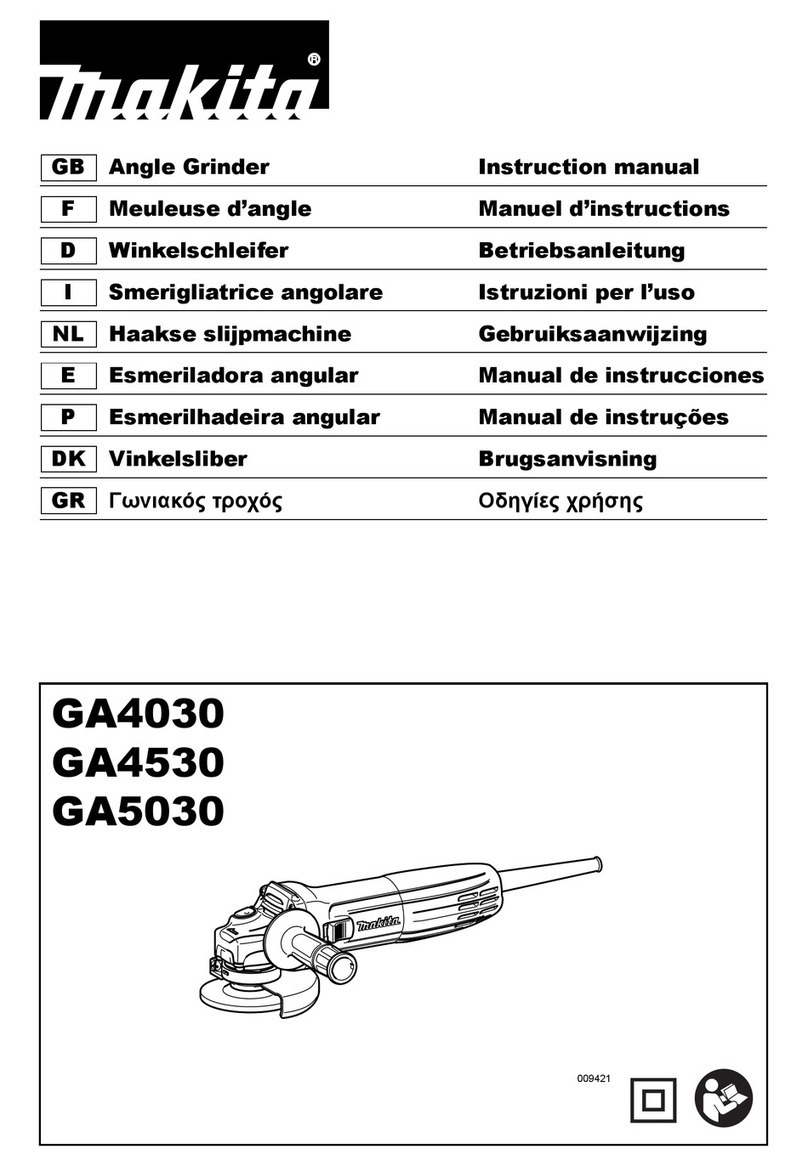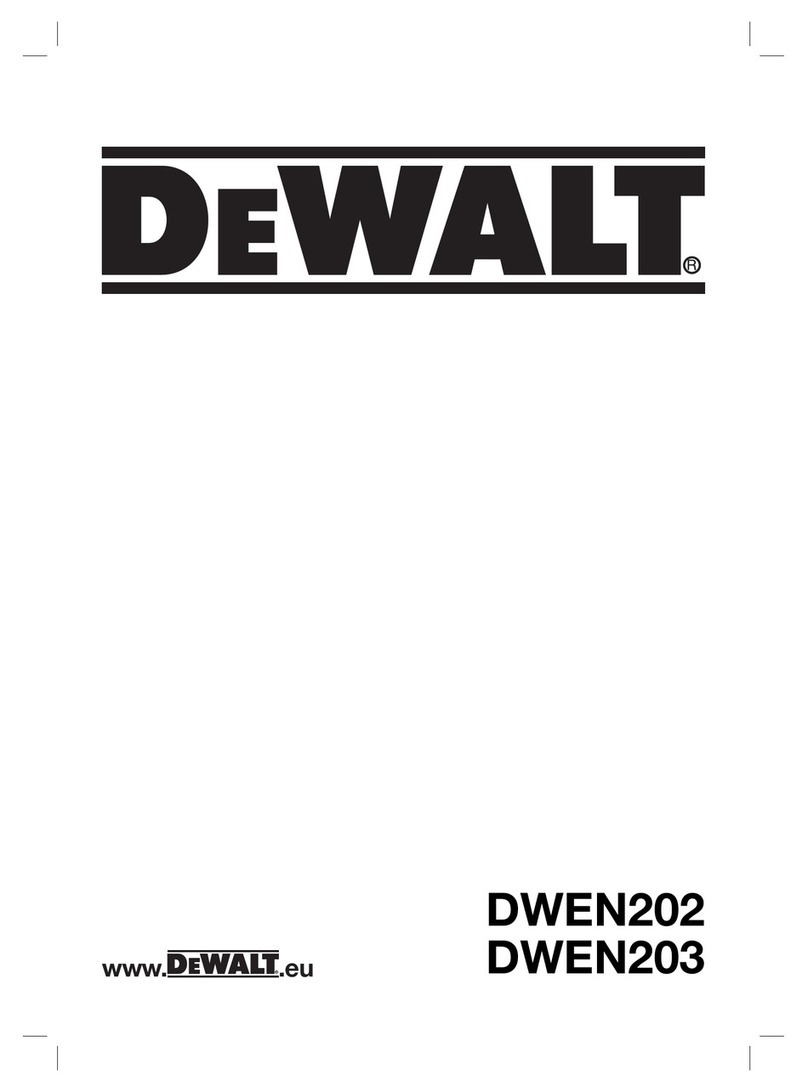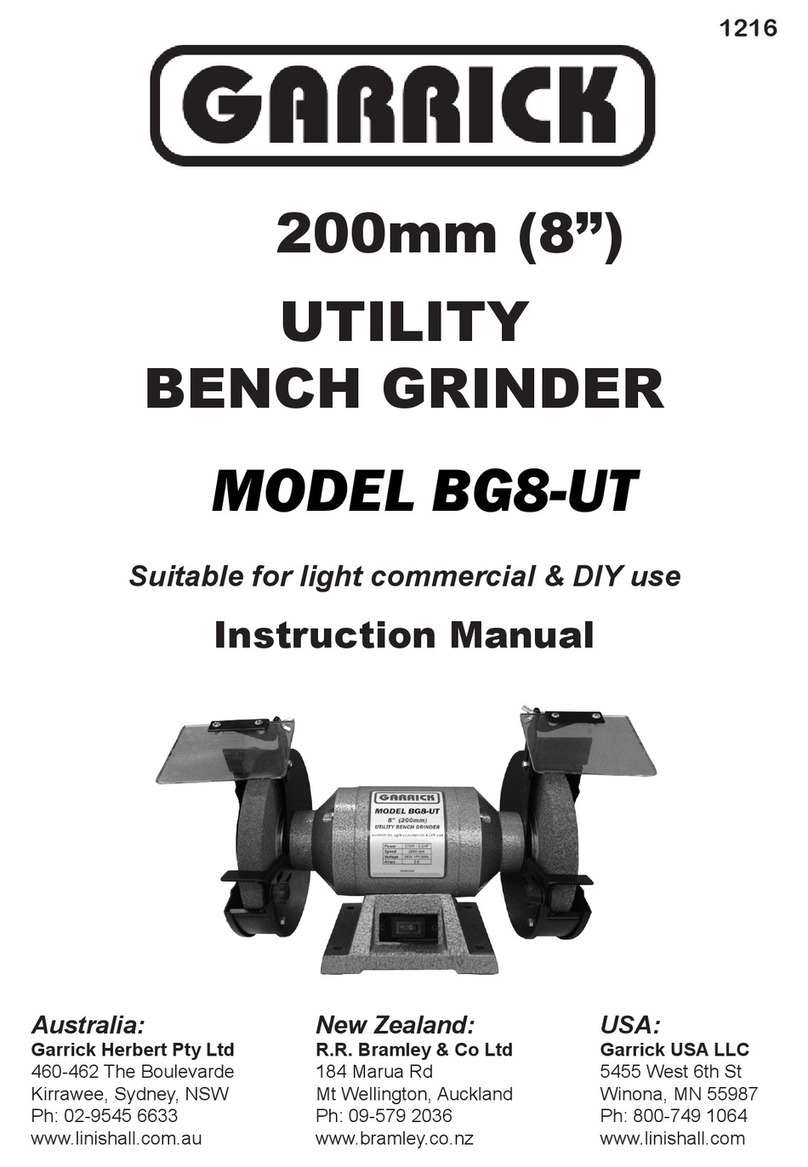
3 GB
b) Do not operate power tools in explosive atmospheres, such as in the presence of flammable liquids,
gases or dust. Power tools create sparks which may ignite the dust or fumes.
c) Keep children and bystanders away while operang a power tool. Distracons can cause you to lose
control.
2) Electrical safety
a) Power tool plugs must match the outlet. Never modify the plug in any way. Do not use any adapter
plugs with earthed (grounded) power tools. Unmodified plugs and matching outlets will reduce risk of
electric shock.
b) Avoid body contact with earthed or grounded surfaces, such as pipes, radiators, ranges and
refrigerators. There is an increased risk of electric shock if your body is earthed or grounded.
c) Do not expose power tools to rain or wet condions. Water entering a power tool will increase the risk
of electric shock.
d) Do not abuse the cord. Never use the cord for carrying, pulling or unplugging the power tool. Keep cord
away from heat, oil, sharp edges and moving parts. Damaged or entangled cords increase the risk of electric
shock.
e) When operang a power tool outdoors, use an extension cord suitable for outdoor use. Use of a cord
suitable for outdoor use reduces the risk of electric shock.
f) If operang a power tool in a damp locaon is unavoidable, use a residual current device (RCD)
protected supply. Use of an RCD reduces the risk of electric shock.
3) Personal safety
a) Stay alert, watch what you are doing and use common sense when operang a power tool. Do not
use a power tool while you are red or under the influence of drugs, alcohol or medicaon. A moment of
inaenon while operang power tools may result in serious personal injury.
b) Use personal protecve equipment. Always wear eye protecon. Protecve equipment such as dust
mask, non-skid safety shoes, hard hat, or hearing protecon used for appropriate condions will reduce
personal injuries.
c) Prevent unintenonal starng. Ensure the switch is in the off-posion before connecng to power
source and/or baery pack, picking up or carrying the tool. Carrying power tools with your finger on the
switch or energising power tools that have the switch on invites accidents.
d) Remove any adjusng key or wrench before turning the power tool on. A wrench or a key leaached
to a rotang part of the power tool may result in personal injury.
e) Do not overreach. Keep proper foong and balance at all mes. This enables beer control of the
power tool in unexpected situaons.
f) Dress properly. Do not wear loose clothing or jewellery. Keep your hair, clothing and gloves away from
moving parts. Loose clothes, jewellery or long hair can be caught in moving parts.
g) If devices are provided for the connecon of dust extracon and collecon facilies, ensure these are
connected and properly used. Use of dust collecon can reduce dust-related hazards.
4) Power tool use and care
a) Do not force the power tool. Use the correct power tool for your applicaon. The correct power tool
will do the job beer and safer at the rate for which it was designed.
b) Do not use the power tool if the switch does not turn it on and off. Any power tool that cannot be
controlled with the switch is dangerous and must be repaired.
c) Disconnect the plug from the power source and/or the baery pack from the power tool before
making any adjustments, changing accessories, or storing power tools. Such prevenve safety measures
reduce the risk of starng the power tool accidentally.
d) Store idle power tools out of the reach of children and do not allow persons unfamiliar with the power
tool or these instrucons to operate the power tool. Power tools are dangerous in the hands of untrained
users.
e) Maintain power tools. Check for misalignment or binding of moving parts, breakage of parts and any
other condion that may affect the power tool’s operaon. If damaged, have the power tool repaired
before use. Many accidents are caused by poorly maintained power tools.
